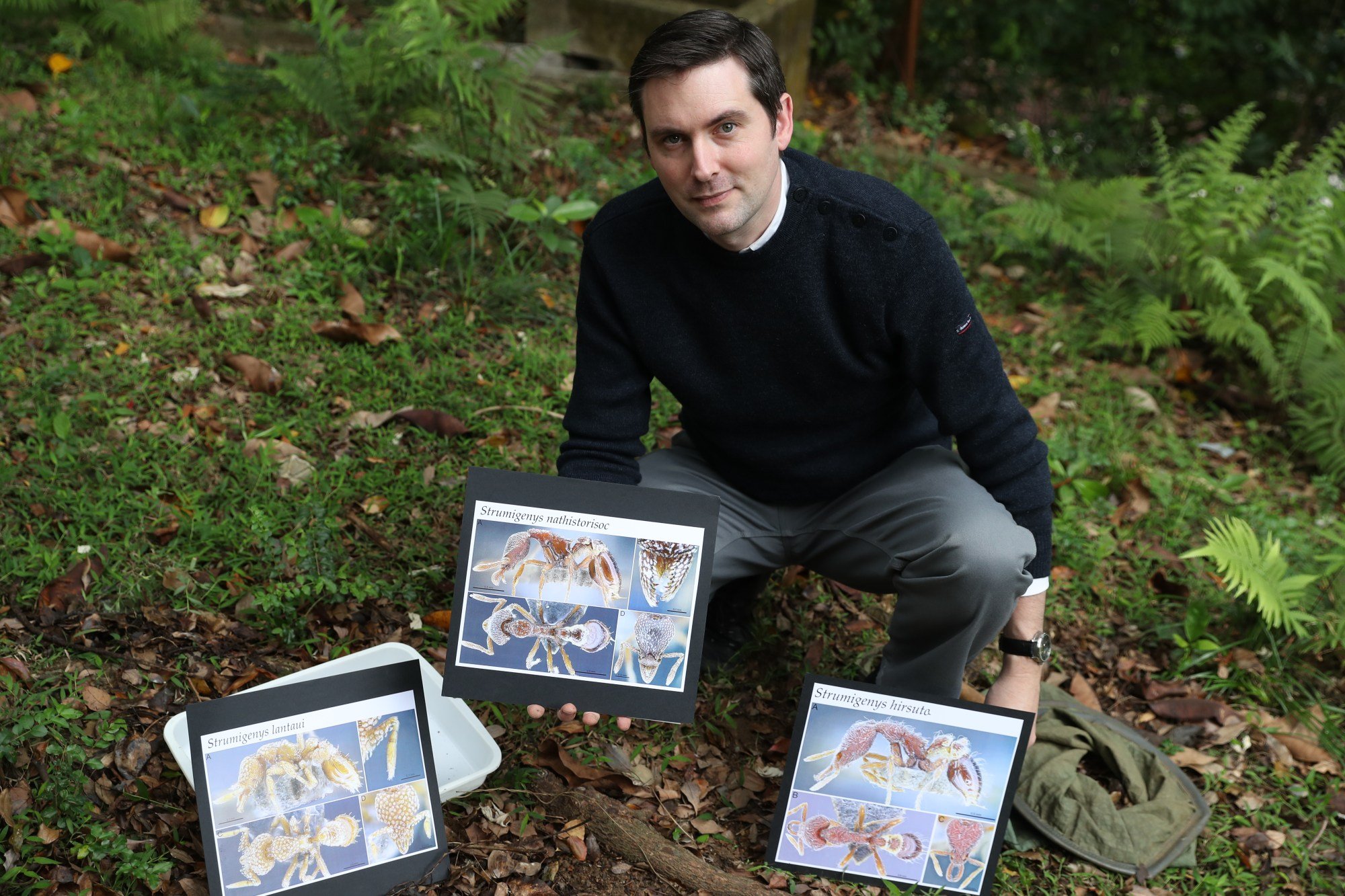
Hong Kong Biodiversity Museum looks to counter ‘prejudice’ against spiders as part of mission to boost ecological awareness
- The museum has been encouraging members of the public to photograph colourful jumping spiders as part of a mission to boost awareness of the natural world
- The site on the University of Hong Kong campus has a collection of thousands of specimens, some of which come from unwanted taxidermy collections
The Hong Kong Biodiversity Museum has been trying to encourage the public to take a more positive view of one of the most maligned of all creatures – the spider – as part of its wider mission to improve attitudes and awareness of the natural world.
As their name suggests, they are also noted for their ability to make large jumps which, combined with their exceptional vision, helps them to catch their prey rather than spinning the webs that other spiders rely on.
While spiders are key to ecosystems, they are often underappreciated.
The global spider population eats around 400 to 880 million tonnes of prey every year, regulating the population of many insects and other arthropods, a 2017 study found. By comparison, humans consume about 400 million tonnes of meat and fish every year.
Spiders are also a major food source for birds, frogs, lizards and geckos.
Brazilian love bite: banana spiders may treat erectile problems in ‘few minutes’
“It is a great way to engage the public to look at things that sometimes they had no idea even existed or they thought was creepy or not so good, and to change the way they look [at them],” the museum’s founding director Benoit Guenard said.
“If we want to protect biodiversity, that is what we need to start doing – education and changing the way people look at things so that they realise ‘oh, it is interesting – I had a lot of prejudice – they have beautiful colours’.”
Guenard said visitors have told the museum staff that they are now looking out for various species in the wild after learning about them from the museum.
“You open up a new world – before I was afraid, now I am not and I appreciate them.”
The museum was established in May 2021 in a storage room formerly used to store specimens used as teaching materials.
Since then it has received 36,000 visitors, including tourists from mainland China and Macau.
Guenard, also an associate professor at HKU’s school of biological sciences, said he hopes the museum will expand in size to showcase its whole collection of more than 50,000 specimens.

“I hope that in the future, we will be able to forge collaborations to develop a larger museum to display more specimens but also to preserve more specimens in the collection so our role as a biobank, preserving the diversity of species encountered in Hong Kong and more broadly within Asia can increase,” he said.
The museum is also benefiting from changing attitudes towards taxidermy collections.
“We get donations from individuals who may have been collectors. They bought things in the early days like in the 1960s or 70s,” the French scientist said, pointing at donated pieces such as muntjacs and sea turtles.
“Sometimes the younger generation does not really want to get them as an inheritance,” he said. “They feel very uncomfortable. But they do not want to throw them away so they contact us.”
He said the museum accepts donations from people who own specimens, “but the last thing we want is for people to go and start hunting things”.
“We see that changing in the living room. Maybe it is going to start changing in their plates as well – the way we approach nature and what we consume.”
China unveils new plan to clean up major rivers and lakes
Stuffed turtles were once a popular symbol of wealth and status in countries such as China and Vietnam.
“People were putting [turtles] on the wall in the living room. Now we find that very creepy, even out of place,” he said. “Nowadays people fortunately realise that they probably should not have this kind of specimen.”
“The only place you should really see that is in the museum with collections that were curated a long time ago.
“It is sad for those individuals because we hope that they would not have been hunted in the first place. But it shows the change of attitude of people towards this kind of display.”

The study published in the journal Global Change Biology said whole stuffed turtles are seen as a symbol of status and wealth in China and Vietnam, while tortoiseshell products are a traditional component of Japanese dress.

